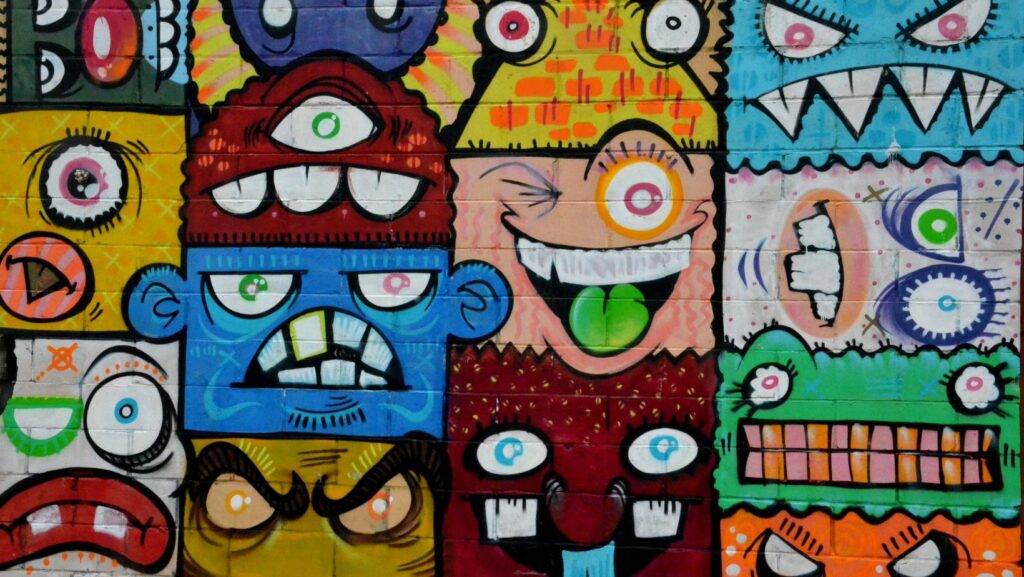Art:jgcszra-dgy= Monster
 In the ever-evolving world of art, there’s a growing fascination with the concept of the art monster. This intriguing term doesn’t refer to a creature lurking in the shadows but rather embodies the relentless pursuit of artistic excellence. An art monster is someone who devotes themselves entirely to their craft, often at the expense of societal norms and personal relationships. It’s a mindset that prioritizes creation above all else, pushing boundaries and challenging conventions.
In the ever-evolving world of art, there’s a growing fascination with the concept of the art monster. This intriguing term doesn’t refer to a creature lurking in the shadows but rather embodies the relentless pursuit of artistic excellence. An art monster is someone who devotes themselves entirely to their craft, often at the expense of societal norms and personal relationships. It’s a mindset that prioritizes creation above all else, pushing boundaries and challenging conventions.
The allure of becoming an art monster lies in the freedom and intensity it offers. For many artists, it’s a way to break free from the mundane and dive deep into the realms of imagination and expression. This fervor can lead to groundbreaking work that resonates with audiences on a profound level. As more creators embrace this philosophy, the art world is witnessing a surge in innovative and daring projects that captivate and inspire.
What Is An Art Monster?
An art monster refers to an artist intensely devoted to their craft, often disregarding societal norms and personal obligations. This archetype embodies a fervent pursuit of creativity, prioritizing artistic expression above all else. While society frequently encourages balance in work and life, art monsters embrace imbalance, channeling their energy toward their artistic vision.
The journey to becoming an art monster involves embracing a distinct, sometimes solitary lifestyle. Artists may voluntarily isolate themselves, seeking uninterrupted time to explore their imagination. This dedication often leads to groundbreaking and transformative art. Society may view the art monster with a mix of admiration and reproach, as their lifestyle challenges conventional expectations.
Art monsters serve as catalysts for change within the art world. Their relentless pursuit of innovation inspires fellow artists to reconsider established boundaries. Instead of conforming, they boldly explore uncharted territories in their work. This has led to an explosion of daring, impactful creations resonating deeply with audiences worldwide.
Historical Context Of Art Monsters
The notion of an art monster isn’t new. It has historical roots reflecting artists’ profound dedication and sometimes extreme measures in their creative pursuits.
The Origin Of The Term
The term art monster stems from the need to describe artists who defy conventional life scripts for their craft. This concept gained traction during the 20th century when artists began publicly rejecting societal norms in favor of personal creative exploration. Literary sources and art movements captured this evolution, reflecting a growing fascination with artists’ inner turmoil and relentless drive for innovation.
Famous Art Monsters In History
Vincent van Gogh exemplifies an art monster through his intense emotional connection to his work and his disregard for societal expectations. His tumultuous life resulted in groundbreaking art that continues to influence modern artists. Similarly, Virginia Woolf, with her dedication to literature, broke from societal conventions to produce works that challenged gender roles and narrative structures. Her legacy endures as she remains a symbol of literary innovation. These individuals embody the historical essence of art monsters, whose pursuit of artistic excellence often led to personal sacrifice.
Characteristics Of An Art Monster
Creativity And Obsession
Art monsters channel boundless creativity through an obsessive focus on their craft. Their work often showcases unique perspectives and unexplored themes due to their relentless pursuit of perfection. This intense passion drives them to explore beyond conventional limits, producing art that resonates on a profound level. Picasso, for example, spent countless hours perfecting his cubist style, reflecting this intensity.
Modern Interpretations Of Art Monsters
In today’s culture, art monsters carve out spaces in social media and digital platforms. Artists like Marina Abramović and Banksy  exemplify this archetype by rejecting traditional pathways and redefining art through provocative installations and street art, respectively. The digital age facilitates the rise of art monsters, granting them autonomy to showcase their unique visions without conventional constraints. These creators resonate with younger audiences who admire their audacity and willingness to subvert norms, transforming the cultural landscape.
exemplify this archetype by rejecting traditional pathways and redefining art through provocative installations and street art, respectively. The digital age facilitates the rise of art monsters, granting them autonomy to showcase their unique visions without conventional constraints. These creators resonate with younger audiences who admire their audacity and willingness to subvert norms, transforming the cultural landscape.
Within creative industries, art monsters drive innovation across various sectors. They push boundaries in film, music, and design, fostering environments where experimentation thrives. This archetype influences industry trends by challenging conventional methodologies and advocating for originality. Artistic visionaries like David Lynch and Björk embody the art monster’s spirit, blending different mediums to create immersive experiences that redefine genres. Their contributions elevate the creative industries, setting new standards for artistic excellence and ingenuity.

